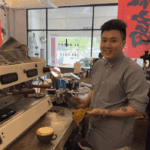
Chinese independent schools. Malaysians either love them, hate them, or have a mixed bag of opinions.
You’ll often hear these words: rigorous and tough. Results-oriented. But perhaps most of all, challenging – to a stressful degree, even.
The catch? These schools aren’t funded by the government, and the Malaysian government does not recognise their syllabus.
The primary language of instruction isn’t even the national language, which is often a popular topic for discourse. Some argue that Chinese independent schools are unconstitutional and pose a roadblock to Malaysia’s national unity.
Yet, thousands of Malaysian children attend them. Why is that?
What are Chinese independent schools, and where did they come from?
Chinese independent schools were founded by ethnic Chinese in Malaya (early Malaysia) around the 19th century to provide education in the Chinese language.
After the country gained independence, the government instructed all schools to surrender their properties and assimilate into the national education system. While some did, some chose to fight back – they refused the proposals and became independent, hence the name.
As independent schools, they do not receive consistent funding from the Malaysian government and primarily rely on private donations, charity events, and fundraisers to operate.
Yet, despite being private institutions, school fees are substantially lower than those of most other private schools. Expect to pay around 6,000 to 7,000 Malaysian ringgit (US$1,418 to US$1,655) for each academic year, compared to private or international schools, which average around 10,000 to 100,000 Malaysian ringgit (US$2,365 to US$23,651) or more.
Currently, there are 60 Chinese independent schools in Malaysia. While student populations have remained mainly Chinese, the schools are open to Malaysians of all races, backgrounds, and cultures.
Students usually spend six years in school, divided into two stages – junior middle, and senior middle, similar to the secondary school systems in China and Taiwan.
Before entering senior middle, students are streamed into Science or Art/Commerce tracks depending on their strengths or personal preferences; for those looking to join STEM fields, the Science track is practically a means to an end.
At the end of each stage is the Unified Examination Certificate (UEC), a rigorous exam that the Malaysian government does not recognise; however, it is often used as a stepping stone to pursue higher education in China, Taiwan, and other countries. Those who want to pursue higher education locally must spend extra time preparing for the Malaysian national exam (Sijil Pelajaran Malaysia, known as SPM) and attend extra classes after school or on the weekend.
But perhaps the toughest part of being in a Chinese independent school, as graduate Joshua Lim tells us, is juggling all of the above, while not being fluent in the language.

Joshua Lim is a Hin Hua alumni, and is now a medical student in the UK. Source: Joshua Lim
Meet Joshua Lim
Lim, recently completing his third year of medical school at the University of Liverpool, looks back on his Chinese independent school days fondly. He previously attended Hin Hua Secondary School, one of the most popular Chinese independent schools within the Selangor state.
The reasons for its popularity are predictable – students excel academically, participate in interstate and international competitions, and often end up studying abroad at prestigious institutions.
Having been within the Chinese independent school system since his primary years, Lim was familiar with its ins and outs. Aside from a highly organised environment, there were more classes, notes, tests, and projects compared to other public or private schools, and everything was taught in Mandarin.
“I was quite a hard-working student, but I won’t pretend it was easy being in a Chinese independent school,” reflects Lim. “I struggled a lot with the Mandarin language, which is hard because everything is in it – science, math, biology, history, and there’s a lot of memorisation involved.”
“But I’m still pretty proud of myself because I scored an A for Chinese in my sixth year,” he adds cheerily.

After graduating from a Chinese independent school, a medical degree is probably a walk in the park. Source: Joshua Lim
Like most students in a Chinese independent school, Lim opted for both the SPM and UEC, juggling preparations for both exams in his senior middle years. While some of the UEC and SPM syllabi were similar, the hardest part was switching languages for chemistry, biology, and history. Hin Hua had to prepare the students for that.
“We had additional tuition classes to familiarise ourselves with the national syllabus for SPM, and get used to the subjects in Malay,” he says. “The school usually has extra tuition classes on Saturdays every couple of weeks, but it also involves a lot of self-preparation and study.”
Why take two exams, you may wonder? As mentioned earlier, the Malaysian government does not recognise the UEC syllabus, and only some private institutions like Monash University, Taylor’s University, and UOW Malaysia accept applications with it. Many students take both exams just to have something to fall back on, in case their study abroad applications or plans fall through.
As a result, school days were longer – classes usually ended around 3 PM regularly. With extra tuition for SPM on top of weekly co-curricular activities, sometimes students would go home only after 6 PM.
But it was due to this rigorous lifestyle that students are trained to be disciplined and studious from a young age, traits which Lim admits are advantageous for further study, especially overseas.
“I think Hin Hua trained me well,” he admits. “I had gotten used to the schedule since I was young, and learned to manage my time well while studying, and now here in the UK studying medicine, it’s been super helpful because it’s such an intensive and time-consuming course to pursue.”

Hin Hua allowed Lim to explore his talent for writing; he has since published several short fantasy stories. Source: Joshua Lim
It’s not all about academics either
One key part of Chinese independent schools – at least, from Lim’s experience at Hin Hua – was that there were a lot of student-led societies.
Music, art, martial arts, language, sports, and even things like calligraphy, manga, and research were options for every student. Lim himself was a member of the school’s broadcasting club for six years and thoroughly enjoyed his time there.
“Teachers don’t run clubs and societies, and students are the ones holding positions like chairman, secretary, finance, and so on, and they are the ones who plan and host activities and events,” he says. “Teachers are just there to supervise. These were excellent opportunities for students to develop leadership skills and work together in various ways.”
For students who excelled in their area of interest, the school made a point to encourage them to further their achievements by participating in competitions. Debate competitions in English and Mandarin were held with other Chinese independent schools across the state. Sports events, meets, and tournaments were also held regularly. There were even opportunities for science research teams and programming enthusiasts to join competitions.
“Of course, winning is nice! But even if you may not win things, all this gives students the exposure they need for the future,” says Lim. “Research, designing posters, presenting topics, or even talking and networking with others are great skills to have.”

Lim participates in reading sessions around Malaysia whenever the chance arises, connecting with other book lovers. Source: Joshua Lim
Lim, who enjoys writing, first discovered his knack for it after winning an English prose competition in his second year. In a heartwarming development, he is now part of the community that judges Hin Hua’s annual prose and poetry competitions. He has also published a few of his short stories in anthologies and magazines.
“Back in the day, we used to type our stories and submit them for competitions, but now with things like ChatGPT, Hin Hua had to come up with a way to prevent students from using it,” he says. “Now, they stick all the students into a classroom for 60 minutes, give them a theme, and it’s entirely handwritten. Honestly, good on them for encouraging original creative work.”
Aside from clubs and competitions, there were other opportunities for students to shine. Every year, each class would design their own T-shirts and vote on them, and then they get to wear them to represent their class throughout the year. Even items like the annual school notebook, newspapers, letters, and charity donations are 100% student-designed.
“I think it’s a good tradition to have,” he muses. “Students have a bit more autonomy in how they run things outside classes, and their pursuits are respected. So even though academics are a big thing here, everyone still has opportunities to shine.”










